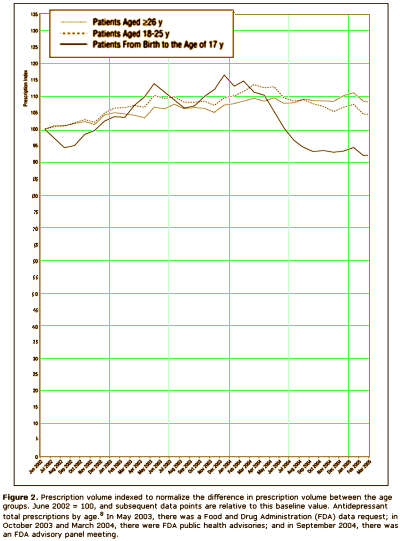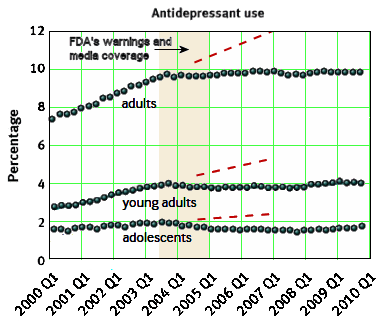PSYCHIATRICNEWSby Mark MoranNovember 2014
Abstract: This is the first of a two-part series on the 2004 FDA hearings on antidepressants and suicidality in adolescents. Part two will focus on the effect of the antidepressant label warning on prescribing and adolescent health.
PSYCHIATRICNEWSBy Mark MoranDecember 2014
Abstract: Despite differences of opinion on the warning, there is agreement that better systems are needed to understand potential relationships among mental illnesses, their treatments or lack of treatment, and suicide attempts and completions. This is the second of a two-part series.
One recent study in the British Medical Journal linked the boxed warning to an increase in suicide attempts, as measured by “psychotropic poisonings.” But that study has been widely criticized for methodological problems, especially its use of psychotropic poisonings as a proxy for suicide attempts.
Darrel Regier, M.D., former director of APA’s Division of Research, who testified against the warning in 2004, noted that the original boxed warning came with explicit, highly prescriptive recommendations for the frequency of visits that should be made with children or adults started on antidepressants; these included weekly visits for the first four weeks, then visits every two weeks, followed by monthly visits… “Primary care physicians who rarely saw patients frequently considered themselves liable to suit if patients had an adverse effect from the antidepressant medication or died if the physician didn’t follow that protocol,” Regier said…Regier countered that although the average severity of depression in patients seen in primary care practices is less than that seen in psychiatric settings, there are actually more people with severe depression treated in primary care settings than are treated by psychiatrists. “Although we now know from clinical trials that patients with mild to moderate depression do as well or better on CBT [cognitive-behavioral therapy] than on antidepressant meds, there is often a failure to treat those with moderately severe to severe depression in those settings because of a hesitancy to use antidepressant medications and the absence of referral sources for CBT or medications to specialists”…“My own sense is that the extensive media coverage of the hearings probably had more of an impact on practice patterns than the black-box warning itself,” said child psychiatrist and past APA Board member David Fassler, M.D. “Front-page articles in major national publications and extensive TV and radio coverage created the general impression that the use of SSRI antidepressants actually increased the risk of suicide in children and adolescents. Although this was not the FDA’s conclusion, it was the coverage most people saw and heard. As a consequence, many parents and physicians became reluctant to use these medications”…But from those interviews there did emerge consensus around a few points — that untreated depression is the most serious risk for suicide; that the FDA warning was never intended to discourage legitimate treatment of adolescent depression, a fact that may have been obscured by lay media reports that oversimplified a complex subject; and that better systems are needed for tracking risk factors for suicide and linking them to meaningful outcomes.

|
And what a Nemeroff et al it was! "by Charles B. Nemeroff, Amir Kalali, Martin B. Keller, Dennis S. Charney, Susan E. Lenderts, Elisa F. Cascade, Hugo Stephenson, and Alan F. Schatzberg" – a rogue’s gallery of KOLs. The red authors are all Quintiles employees [the database used came from Quintiles] [see 2006…]. |
And just to broaden the scope, the New England Journal gave us a ten-year anniversary pro and con duo as Perspective pieces in November:
by Richard A. Friedman, M.D.New England Journal of Medicine 2014 371:1666-1668.
by Marc B. Stone, M.D.New England Journal of Medicine 2014 371:1668-1671.


Looks to me like Marc Stone had the better of Richard Friedman in that exchange in NEJM.
My bottom line is that we need to focus on the hard outcome of completed suicide rather than the soft outcome of “suicidality.” The available data suggest there has been no meaningful change among 10-24 year-olds between 1991 and 2009. See here. That null effect is consistent with calculations that appeared in the wake of the TADS trial in 2005. See here. I concluded then that there would be equipoise between a preventive effect and a provoking effect of antidepressant drugs on suicide rates in adolescents. Suicidality is an important clinical event, of course, but it is presently too “soft” to allow rigorous research studies, even disregarding the bias of voices like Gibbons and Mann and Lu and Nemeroff.